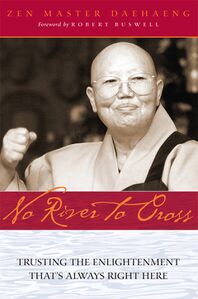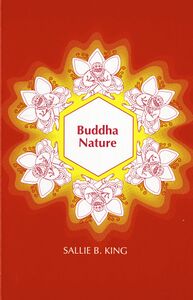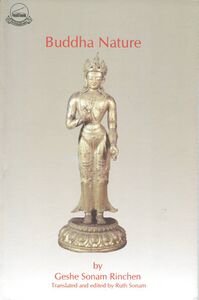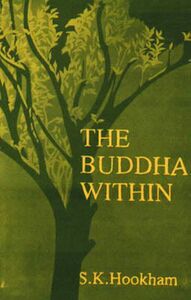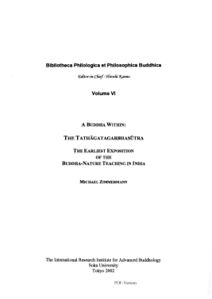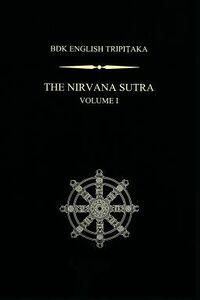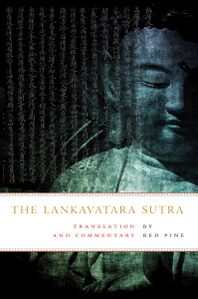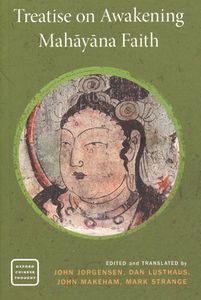Begin Discovering Your Buddha-Nature: Difference between revisions
No edit summary |
No edit summary |
||
| Line 297: | Line 297: | ||
|page=Primary_Sources | |page=Primary_Sources | ||
|description=<div class="section-header mt-2 mb-4 border-bottom-rightfade">Study the Sources</div> | |description=<div class="section-header mt-2 mb-4 border-bottom-rightfade">Study the Sources</div> | ||
<div class="pl-lg-5 pr-lg-4">The seeds of buddha-nature teachings are sprinkled throughout the sutras and tantras of the Buddhist canon. A core group of scripture that initially taught buddha-nature known as the tathāgatagarbha sūtras date between the second and fourth centuries. These include the ''Tathāgatagarbhasūtra'', the ''Mahāparinirvāṇasūtra'', the ''Śrīmālādevīsūtra'' and several others. The famous ''Laṅkāvatārasūtra'' was also important for buddha-nature theory. In Tibetan Buddhism the late-Indian treatise ''Ratnagotravibhāga Mahāyānottaratantraśāstra'', or ''Gyü Lama'' as it is known in the Tibetan, serves as a major source for buddha-nature. In East Asia the ''Awakening of Faith in the Mahāyāna'' (大乗起信論) | <div class="pl-lg-5 pr-lg-4">The seeds of buddha-nature teachings are sprinkled throughout the sutras and tantras of the Buddhist canon. A core group of scripture that initially taught buddha-nature known as the tathāgatagarbha sūtras date between the second and fourth centuries. These include the ''Tathāgatagarbhasūtra'', the ''Mahāparinirvāṇasūtra'', the ''Śrīmālādevīsūtra'' and several others. The famous ''Laṅkāvatārasūtra'' was also important for buddha-nature theory. In Tibetan Buddhism the late-Indian treatise ''Ratnagotravibhāga Mahāyānottaratantraśāstra'', or ''Gyü Lama'' as it is known in the Tibetan, serves as a major source for buddha-nature. In East Asia the ''Awakening of Faith in the Mahāyāna'' (大乗起信論) and the ''Vajrasamādhisūtra'' were the most influential treatises in spreading buddha-nature theory. All of these important buddha-nature texts have been translated into English by leading scholars and translators. Below is a selection of these works:</div> | ||
|image=https://commons.tsadra.org/images-commons/thumb/c/c7/Maitreya_statue.jpg/431px-Maitreya_statue.jpg | |image=https://commons.tsadra.org/images-commons/thumb/c/c7/Maitreya_statue.jpg/431px-Maitreya_statue.jpg | ||
|textclasses=maitreya-gradient pt-2 pb-3 | |textclasses=maitreya-gradient pt-2 pb-3 | ||
| Line 333: | Line 333: | ||
|name=[[People/Red_Pine|Red Pine]] | |name=[[People/Red_Pine|Red Pine]] | ||
|title=The Lankavatara Sutra: A Zen Text | |title=The Lankavatara Sutra: A Zen Text | ||
}} | |||
{{ExploreBook | |||
|page=Books/Buddha_Nature:_The_Mahayana_Uttaratantra_Shastra | |||
|image=File:Buddha Nature The Mahayana Uttaratantra Shastra-front.jpg | |||
|authorimage=People/Fuchs,_R. | |||
|name=[[People/Fuchs,_R.|Rosemarie Fuchs]] | |||
|title=Buddha Nature: The Mahayana Uttaratantra Shastra | |||
}} | }} | ||
{{ExploreBook | {{ExploreBook | ||
| Line 341: | Line 348: | ||
}} | }} | ||
{{ExploreBook | {{ExploreBook | ||
|page=Books/ | |page=Books/The_Formation_of_Ch'an_Ideology_in_China_and_Korea | ||
|image=File: | |image=File:The Formation of Ch'an Ideology in China and Korea-front.jpg | ||
|authorimage=People/ | |authorimage=People/Buswell,_R. | ||
|name=[[People/ | |name=[[People/Buswell,_R.|Robert Buswell]] | ||
|title= | |title=The Formation of Ch'an Ideology in China and Korea (The ''Vajrasamādhisūtra''} | ||
}} | }} | ||
</div> | </div> | ||
Revision as of 17:13, 15 December 2020
Buddha-Nature in East Asia
Multimedia
Ringu Tulku
Tokpa Tulku
I.28
རྫོགས་སངས་སྐུ་ནི་འཕྲོ་ཕྱིར་དང་། །
དེ་བཞིན་ཉིད་དབྱེར་མེད་ཕྱིར་དང་། །
རིགས་ཡོད་ཕྱིར་ན་ལུས་ཅན་ཀུན། །
རྟག་ཏུ་སངས་རྒྱས་སྙིང་པོ་ཅན། །
Since suchness is undifferentiable,
And because of the disposition,
All beings always possess the buddha heart.
संबुद्धकायस्फरणात् तथताव्यतिभेदतः
गोत्रतश्च सदा सर्वे बुद्धगर्भाः शरीरिणः
佛法身遍滿 真如無差別
皆實有佛性 是故說常有
Click to view all verses
The Fourteenth Dalai Lama Tenzin Gyatso
Ringu Tulku
Kirti Tsenshab
Khenpo Sodargye
Orgyen P'huntsok
